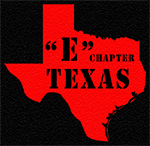“Operation ZERO”
“Zero Veterans Attempt Suicide”
Operation ZERO
Data released by the Pentagon for 2008-2011 shows that 52 percent of military suicides were by those who did not deploy to a combat zone; 34 percent deployed but in a non-combat role; only 14 percent were combat veterans. A study conducted by the Army found that being deployed increased suicide risk for women more than it did for men, though suicide risk still remained lower for deployed women than for deployed men. The data suggest that being male, white, or a junior enlisted rank put individuals at the highest risk of suicide. However this is also the largest segment of the Armed Forces. Those who were divorced were 55% more likely to attempt suicide. And those who attempted suicide once were likely to attempt it a second time. VA Study show that risk for suicide dropped once congress passed the Clay Hunt Act which required more access to mental health and service members must be enrolled to the Veterans Affairs prior to being discharged. The rate is currently believed to be an average of 18 per day.
WHO IS CLAY HUNT?
Clay Hunt was a Marine veteran who died by suicide in March 2011 at the age of 28. Clay enlisted in the Marine Corps in May 2005 and deployed to Anbar Province, near Fallujah, in January 2007. Clay was shot in the wrist by a sniper’s bullet that barely missed his head, earning him a Purple Heart. Clay recuperated at Twenty Nine Palms, CA and then graduated from Marine Corps Scout Sniper School in March 2008. Clay redeployed to southern Afghanistan a few weeks later. His unit returned in late October of 2008 and he was honorably discharged from the Marines in April 2009.
Clay received a 30 percent disability rating from the VA for his PTSD along with two smaller ratings for other health issues after separating from the military. After discovering that his PTSD prevented him from maintaining a steady job, Clay appealed the 30 percent rating only to be met with significant bureaucratic barriers,
including the VA losing his files. Clay exclusively used the VA for his medical care. He constantly voiced concerns about the care he was receiving, both in terms of the challenges he faced with scheduling appointments as well as the treatment he received, which consisted solely of medication. He received counseling only as far as whether the medication he was prescribed was working or not. If it was not, he would be given a new medication. Clay would say, “I’m a guinea pig for drugs. They’ll put me on one thing, I’ll have side effects, and then they put me on something else.” After moving back to Houston to be closer to his family, Clay had to wait months to see a p sychiatrist at the Houston VA medical center. After the appointment, Clay called his mother on his way home and said, “Mom, I can’t go back there. The VA is way too stressful and not a place I can go to.” Two weeks later, Clay took his own life. Five weeks after his death, and 18 months after filing an appeal with the VA for his PTSD rating, Clay’s appeal finally went through. The VA rated his PTSD 100 percent. Clay was open about having PTSD and survivor’s guilt, and he tried to help others coping with similar issues. He worked hard to move forward and found healing by helping people, including participating in humanitarian work with Team Rubicon and participating in IAVA’s annual Storm the Hill advocacy campaign. He also starred in a public service advertising campaign aimed at easing the transition for his fellow veterans, and he helped wounded warriors in long distance road biking events. Clay’s story details the urgency needed in addressing these issues. Despite his proactive and open approach to seeking care to address his injuries, the VA system did not adequately address his needs.
Our Solution
Take the pledge!
- Take the pledge! I will never quit on my life and those of my fellow Veterans (Patch)
- Create a Veteran Suicide Prevention representative (VSP) in every chapter, state, region
- Organize other organizations to join under this campaign, such as IAVA, Project 22, the Veteran’s Affairs, the Branches of Services and others to do like POW/MIA did following Vietnam and those who were Prisoners of War and Missing in Action
- Develop products and outreach to Veterans struggling with suicide, eventually paying for crisis training and counseling, housing if possible and needed
- Work to remove stigmatism that PTSD carriers as a title, so that they many will turn and ask for help instead of taking their life to ease the pain
- Push for legislation that will help veteran PTSD issues and the struggle with suicidal thoughts.
We’re Veterans who understand the military mindset and training. We are our brother’s keeper and we are here for all Veterans. Sponsored by the Viet nam Vets Legacy Vets MC.



















